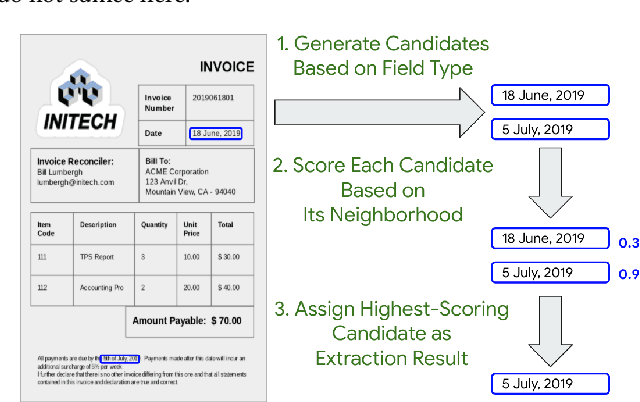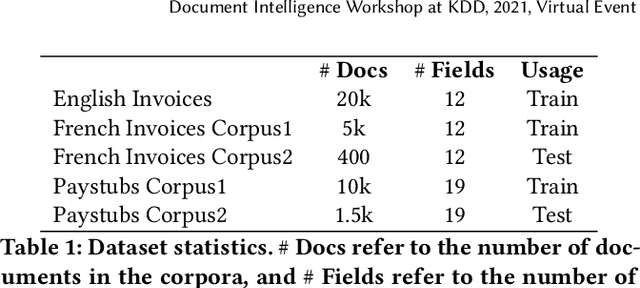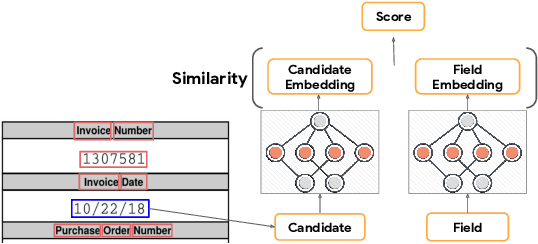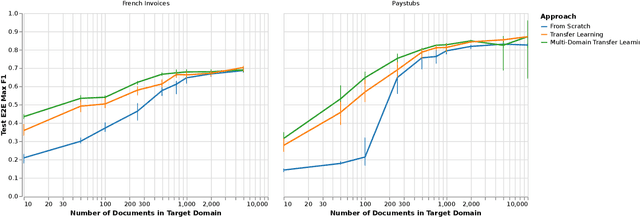Jing Xie
Prefill-Based Jailbreak: A Novel Approach of Bypassing LLM Safety Boundary
Apr 28, 2025Abstract:Large Language Models (LLMs) are designed to generate helpful and safe content. However, adversarial attacks, commonly referred to as jailbreak, can bypass their safety protocols, prompting LLMs to generate harmful content or reveal sensitive data. Consequently, investigating jailbreak methodologies is crucial for exposing systemic vulnerabilities within LLMs, ultimately guiding the continuous implementation of security enhancements by developers. In this paper, we introduce a novel jailbreak attack method that leverages the prefilling feature of LLMs, a feature designed to enhance model output constraints. Unlike traditional jailbreak methods, the proposed attack circumvents LLMs' safety mechanisms by directly manipulating the probability distribution of subsequent tokens, thereby exerting control over the model's output. We propose two attack variants: Static Prefilling (SP), which employs a universal prefill text, and Optimized Prefilling (OP), which iteratively optimizes the prefill text to maximize the attack success rate. Experiments on six state-of-the-art LLMs using the AdvBench benchmark validate the effectiveness of our method and demonstrate its capability to substantially enhance attack success rates when combined with existing jailbreak approaches. The OP method achieved attack success rates of up to 99.82% on certain models, significantly outperforming baseline methods. This work introduces a new jailbreak attack method in LLMs, emphasizing the need for robust content validation mechanisms to mitigate the adversarial exploitation of prefilling features. All code and data used in this paper are publicly available.
Enhancing Incremental Summarization with Structured Representations
Jul 21, 2024



Abstract:Large language models (LLMs) often struggle with processing extensive input contexts, which can lead to redundant, inaccurate, or incoherent summaries. Recent methods have used unstructured memory to incrementally process these contexts, but they still suffer from information overload due to the volume of unstructured data handled. In our study, we introduce structured knowledge representations ($GU_{json}$), which significantly improve summarization performance by 40% and 14% across two public datasets. Most notably, we propose the Chain-of-Key strategy ($CoK_{json}$) that dynamically updates or augments these representations with new information, rather than recreating the structured memory for each new source. This method further enhances performance by 7% and 4% on the datasets.
From ChatGPT, DALL-E 3 to Sora: How has Generative AI Changed Digital Humanities Research and Services?
Apr 29, 2024Abstract:Generative large-scale language models create the fifth paradigm of scientific research, organically combine data science and computational intelligence, transform the research paradigm of natural language processing and multimodal information processing, promote the new trend of AI-enabled social science research, and provide new ideas for digital humanities research and application. This article profoundly explores the application of large-scale language models in digital humanities research, revealing their significant potential in ancient book protection, intelligent processing, and academic innovation. The article first outlines the importance of ancient book resources and the necessity of digital preservation, followed by a detailed introduction to developing large-scale language models, such as ChatGPT, and their applications in document management, content understanding, and cross-cultural research. Through specific cases, the article demonstrates how AI can assist in the organization, classification, and content generation of ancient books. Then, it explores the prospects of AI applications in artistic innovation and cultural heritage preservation. Finally, the article explores the challenges and opportunities in the interaction of technology, information, and society in the digital humanities triggered by AI technologies.
STRUM-LLM: Attributed and Structured Contrastive Summarization
Mar 25, 2024Abstract:Users often struggle with decision-making between two options (A vs B), as it usually requires time-consuming research across multiple web pages. We propose STRUM-LLM that addresses this challenge by generating attributed, structured, and helpful contrastive summaries that highlight key differences between the two options. STRUM-LLM identifies helpful contrast: the specific attributes along which the two options differ significantly and which are most likely to influence the user's decision. Our technique is domain-agnostic, and does not require any human-labeled data or fixed attribute list as supervision. STRUM-LLM attributes all extractions back to the input sources along with textual evidence, and it does not have a limit on the length of input sources that it can process. STRUM-LLM Distilled has 100x more throughput than the models with comparable performance while being 10x smaller. In this paper, we provide extensive evaluations for our method and lay out future directions for our currently deployed system.
An Augmentation Strategy for Visually Rich Documents
Dec 22, 2022Abstract:Many business workflows require extracting important fields from form-like documents (e.g. bank statements, bills of lading, purchase orders, etc.). Recent techniques for automating this task work well only when trained with large datasets. In this work we propose a novel data augmentation technique to improve performance when training data is scarce, e.g. 10-250 documents. Our technique, which we call FieldSwap, works by swapping out the key phrases of a source field with the key phrases of a target field to generate new synthetic examples of the target field for use in training. We demonstrate that this approach can yield 1-7 F1 point improvements in extraction performance.
Radically Lower Data-Labeling Costs for Visually Rich Document Extraction Models
Oct 28, 2022Abstract:A key bottleneck in building automatic extraction models for visually rich documents like invoices is the cost of acquiring the several thousand high-quality labeled documents that are needed to train a model with acceptable accuracy. We propose Selective Labeling to simplify the labeling task to provide "yes/no" labels for candidate extractions predicted by a model trained on partially labeled documents. We combine this with a custom active learning strategy to find the predictions that the model is most uncertain about. We show through experiments on document types drawn from 3 different domains that selective labeling can reduce the cost of acquiring labeled data by $10\times$ with a negligible loss in accuracy.
Towards lifelong learning of Recurrent Neural Networks for control design
Aug 08, 2022



Abstract:This paper proposes a method for lifelong learning of Recurrent Neural Networks, such as NNARX, ESN, LSTM, and GRU, to be used as plant models in control system synthesis. The problem is significant because in many practical applications it is required to adapt the model when new information is available and/or the system undergoes changes, without the need to store an increasing amount of data as time proceeds. Indeed, in this context, many problems arise, such as the well known Catastrophic Forgetting and Capacity Saturation ones. We propose an adaptation algorithm inspired by Moving Horizon Estimators, deriving conditions for its convergence. The described method is applied to a simulated chemical plant, already adopted as a challenging benchmark in the existing literature. The main results achieved are discussed.
* Copyright 2022 EUCA. This article appears in the Proceedings of the 2022 European Control Conference (ECC'22), July 12-15, 2022, London, pp. 2018-2023
An Offset-Free Nonlinear MPC scheme for systems learned by Neural NARX models
Mar 30, 2022



Abstract:This paper deals with the design of nonlinear MPC controllers that provide offset-free setpoint tracking for models described by Neural Nonlinear AutoRegressive eXogenous (NNARX) networks. The NNARX model is identified from input-output data collected from the plant, and can be given a state-space representation with known measurable states made by past input and output variables, so that a state observer is not required. In the training phase, the Incremental Input-to-State Stability ({\delta}ISS) property can be forced when consistent with the behavior of the plant. The {\delta}ISS property is then leveraged to augment the model with an explicit integral action on the output tracking error, which allows to achieve offset-free tracking capabilities to the designed control scheme. The proposed control architecture is numerically tested on a water heating system and the achieved results are compared to those scored by another popular offset-free MPC method, showing that the proposed scheme attains remarkable performances even in presence of disturbances acting on the plant.
Data-Efficient Information Extraction from Form-Like Documents
Jan 07, 2022



Abstract:Automating information extraction from form-like documents at scale is a pressing need due to its potential impact on automating business workflows across many industries like financial services, insurance, and healthcare. The key challenge is that form-like documents in these business workflows can be laid out in virtually infinitely many ways; hence, a good solution to this problem should generalize to documents with unseen layouts and languages. A solution to this problem requires a holistic understanding of both the textual segments and the visual cues within a document, which is non-trivial. While the natural language processing and computer vision communities are starting to tackle this problem, there has not been much focus on (1) data-efficiency, and (2) ability to generalize across different document types and languages. In this paper, we show that when we have only a small number of labeled documents for training (~50), a straightforward transfer learning approach from a considerably structurally-different larger labeled corpus yields up to a 27 F1 point improvement over simply training on the small corpus in the target domain. We improve on this with a simple multi-domain transfer learning approach, that is currently in production use, and show that this yields up to a further 8 F1 point improvement. We make the case that data efficiency is critical to enable information extraction systems to scale to handle hundreds of different document-types, and learning good representations is critical to accomplishing this.
On Recurrent Neural Networks for learning-based control: recent results and ideas for future developments
Nov 26, 2021



Abstract:This paper aims to discuss and analyze the potentialities of Recurrent Neural Networks (RNN) in control design applications. The main families of RNN are considered, namely Neural Nonlinear AutoRegressive eXogenous, (NNARX), Echo State Networks (ESN), Long Short Term Memory (LSTM), and Gated Recurrent Units (GRU). The goal is twofold. Firstly, to survey recent results concerning the training of RNN that enjoy Input-to-State Stability (ISS) and Incremental Input-to-State Stability ({\delta}ISS) guarantees. Secondly, to discuss the issues that still hinder the widespread use of RNN for control, namely their robustness, verifiability, and interpretability. The former properties are related to the so-called generalization capabilities of the networks, i.e. their consistency with the underlying real plants, even in presence of unseen or perturbed input trajectories. The latter is instead related to the possibility of providing a clear formal connection between the RNN model and the plant. In this context, we illustrate how ISS and {\delta}ISS represent a significant step towards the robustness and verifiability of the RNN models, while the requirement of interpretability paves the way to the use of physics-based networks. The design of model predictive controllers with RNN as plant's model is also briefly discussed. Lastly, some of the main topics of the paper are illustrated on a simulated chemical system.
 Add to Chrome
Add to Chrome Add to Firefox
Add to Firefox Add to Edge
Add to Edge